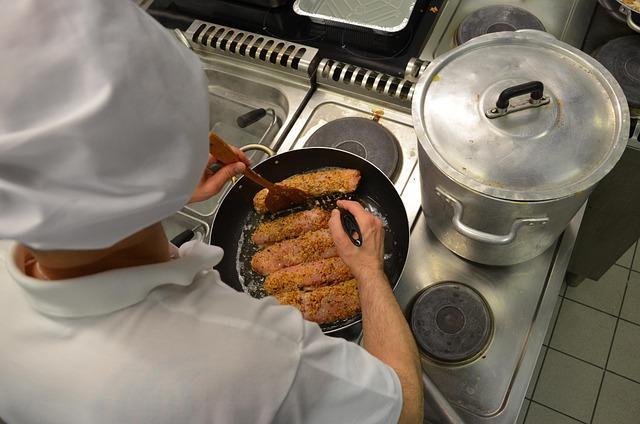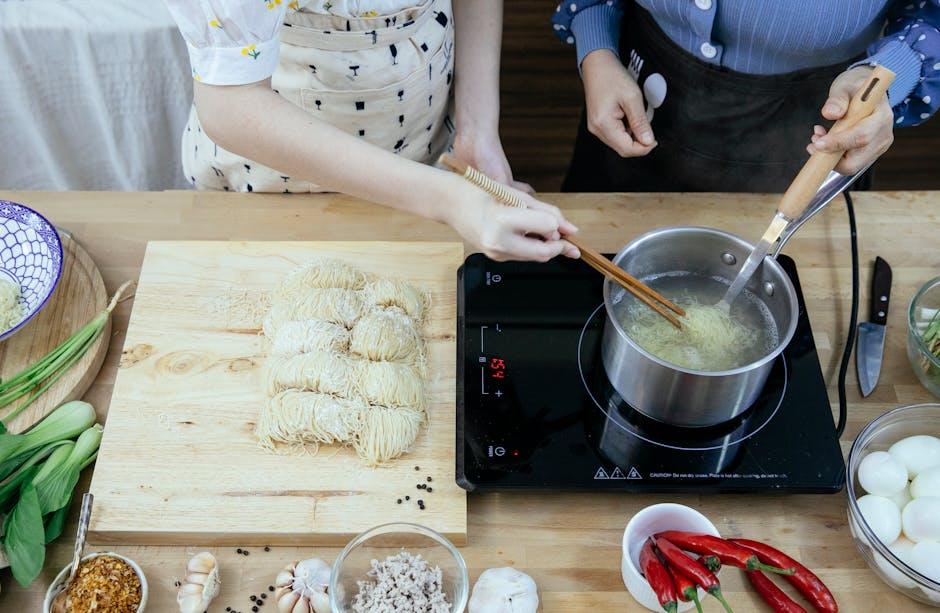When it comes to modern kitchens, flat-top stoves have revolutionized the way we cook, offering sleek designs and efficient heat distribution. However, with the rise of these innovative cooking surfaces comes the need for cookware that can harness their power effectively. Not all pots and pans are created equal, especially when it comes to induction compatibility. In this article, we delve into the world of induction-compatible cookware, examining various options that promise not just compatibility, but also exceptional performance on flat-top stoves. From stainless steel to cast iron, we’ll review the top contenders, exploring their features, advantages, and any potential drawbacks to help you make an informed choice for your culinary adventures. Whether you’re a seasoned chef or a home cook, join us as we uncover which cookware truly shines on flat tops.
Understanding Induction Technology and Its Impact on Cookware Performance
Induction technology revolutionizes the way we cook by using electromagnetic fields to directly heat cookware, rather than relying on external heat sources like gas or electric burners. This technology allows for precise temperature control and immediate heat adjustments, making it a popular choice for both home cooks and professionals. Induction-compatible cookware is specifically designed with ferromagnetic materials, enabling it to respond efficiently to the induction cooktop. As a result, you’ll notice quicker boiling times, reduced energy consumption, and less residual heat, contributing to a safer and cooler cooking environment.
While induction cooking has many advantages, not all cookware performs equally well on induction surfaces. To ensure optimal performance, it’s essential to consider factors such as material type, base thickness, and flatness of the base. Common materials that work well with induction include stainless steel, cast iron, and some types of non-stick coatings that feature a magnetic layer. Below is a simplified comparison table showcasing different cookware materials and their compatibility with induction cooking:
| Material | Induction Compatibility | Heat Retention |
|---|---|---|
| Stainless Steel | ✔️ | Good |
| Cast Iron | ✔️ | Excellent |
| Aluminum (with magnetic base) | ✔️ | Fair |
| Non-Stick (with magnetic base) | ✔️ | Good |
| Glass | ❌ | N/A |

Key Materials for Optimal Induction Cooking: A Detailed Comparison
Induction cooking relies on the interaction between cookware and magnetic fields to provide efficient and precise heating. Consequently, selecting the right materials for your induction-compatible cookware is crucial. The most commonly favored materials include cast iron, stainless steel, and ceramic-coated</strong options. Each of these materials offers unique properties:
- Cast Iron: Renowned for its excellent heat retention and even cooking, cast iron is a favorite for searing and frying. However, it tends to be heavier and can require maintenance to prevent rusting.
- Stainless Steel: This material is not only durable and non-reactive but also easy to clean. The performance of stainless steel cookware largely depends on its construction, with multi-ply options providing superior heat distribution.
- Ceramic-Coated: A popular choice for those seeking non-stick properties without the concerns of traditional coatings, ceramic cookware is generally lighter and offers a range of vibrant colors, though its durability may vary.
| Material | Heat Retention | Durability | Maintenance |
|---|---|---|---|
| Cast Iron | High | Very High | Requires seasoning |
| Stainless Steel | Moderate | High | Low |
| Ceramic-Coated | Moderate | Variable | Easy |
Selecting the right cookware goes beyond just material; the construction and design also play pivotal roles in cooking performance. While many induction cooktops can detect compatible cookware, the size and shape of the pan’s base can impact how evenly heat is distributed. Therefore, it’s beneficial to look for flat-bottomed pots and pans that match your induction burner’s diameter for optimal results. Furthermore, the quality of the induction heat transfer is significantly influenced by the cookware’s thickness; thicker bases provide better heat retention, minimizing hot spots and ensuring consistent cooking.
- Flat-bottomed surfaces: Enhance stability and promote even heat distribution.
- Thick bases: Favorably impact heat retention and cooking consistency.
- Magnet test: Ensure your cookware adheres to a magnet before purchase; this guarantees compatibility with induction cooktops.

Top Induction-Compatible Cookware Brands and Their Standout Features
When it comes to cooking on induction surfaces, choosing the right cookware can dramatically affect both performance and convenience. Some of the leading brands in the market not only provide superior heat distribution but also boast durability and stylish designs. Among these, All-Clad stands out with its premium stainless steel construction and bonded aluminum cores, ensuring rapid heating while providing an elegant finish. Another notable contender is Cuisinart, praised for its affordability and versatility, with options that include both non-stick and stainless steel collections ideal for everyday use.
In addition to these giants, Scanpan has gained acclaim for its environmentally-friendly manufacturing process and ceramic titanium non-stick surface, which is perfect for health-conscious cooks. Finally, Le Creuset offers a colorful array of enameled cast iron cookware that not only performs well on induction but also adds a pop of color to any kitchen. Here’s a quick comparison of their standout features:
| Brand | Material | Key Features |
|---|---|---|
| All-Clad | Stainless Steel | Durable, even heat distribution, dishwasher safe |
| Cuisinart | Stainless Steel & Non-stick | Affordable, versatile options, easy to clean |
| Scanpan | Ceramic Titanium | Eco-friendly, non-stick, PFOA-free |
| Le Creuset | Enameled Cast Iron | Colorful, superior heat retention, stylish |

User Feedback and Real-World Testing: Which Cookware Delivers the Best Results?
Through extensive user feedback, it’s clear that different cookware materials significantly influence cooking efficiency and results. For instance, many users reported that stainless steel cookware performs exceptionally well on induction cooktops, providing quick heat-up times and even heat distribution. Cast iron options received mixed reviews; while they excel in retaining heat, some users found them heavy and cumbersome, especially when trying to manage multiple dishes at once. Additionally, non-stick induction-compatible pans were lauded for their ease of use and cleanup, but users noted that they required careful handling to avoid scratching the surface.
Real-world testing revealed that design can play a crucial role in user satisfaction. Cookware featuring ergonomic handles and balanced weight were favored for comfort during cooking. A table summarizing feedback on various types of cookware highlights the most popular options based on user experience and performance:
| Cookware Type | User Ratings | Performance Highlights |
|---|---|---|
| Stainless Steel | 4.5/5 | Quick heat-up, even cooking |
| Cast Iron | 4/5 | Excellent heat retention |
| Non-Stick | 4.3/5 | Easy to clean, less sticking |
The Way Forward
As we conclude our exploration of induction-compatible cookware, it’s clear that the choices available today are as diverse as the culinary techniques they accommodate. Whether you’re a seasoned chef or a kitchen novice, understanding the nuances of various materials, designs, and brands can empower you to make the best selection for your flat-top induction cooktop.
From stainless steel’s durability to the even heating of cast iron, each type of cookware brings its own unique set of advantages and challenges. The rise in popularity of induction cooking has sparked a myriad of innovations in cookware, ensuring that there’s something for every style of cooking and personal preference.
As you embark on your cooking adventures, remember that the right cookware is not merely a tool but an extension of your creativity in the kitchen. By choosing the best induction-compatible pans and pots, you’re not only investing in performance but also in the joy of crafting delicious meals. Armed with insights from our reviews, you’re ready to elevate your culinary experience and savor the art of cooking. Thank you for joining us on this gastronomic journey—here’s to many delicious meals prepared with the best in cookware!




